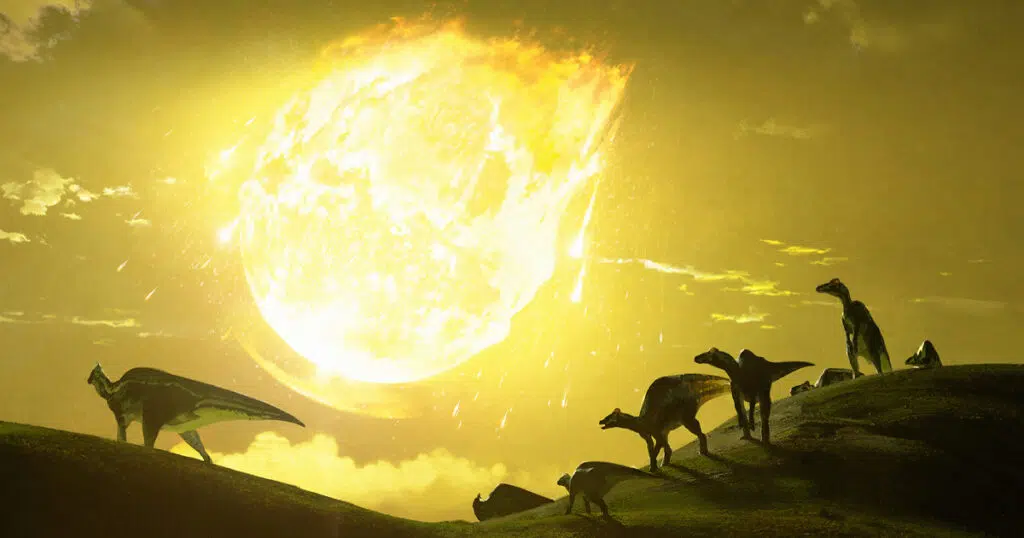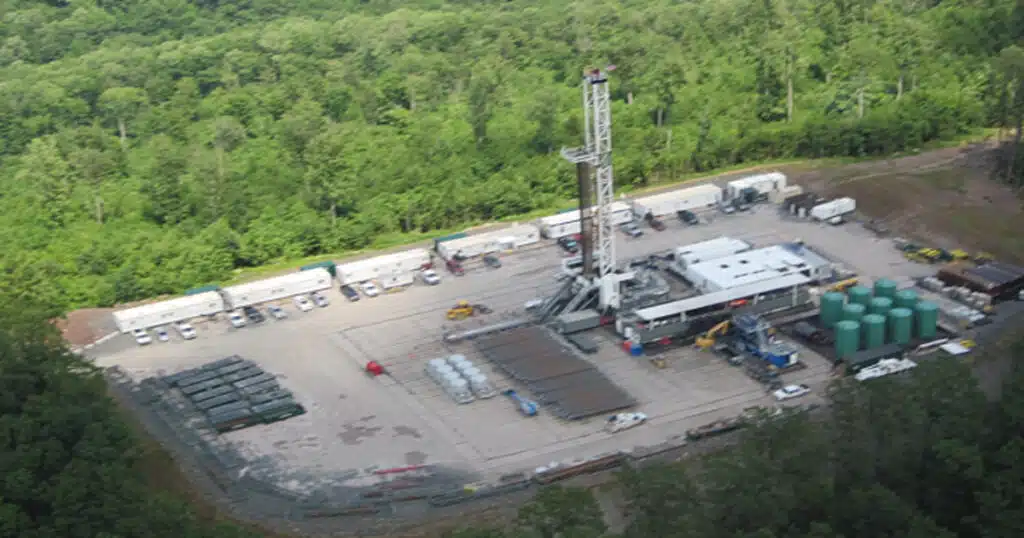
“Nadir” And The End Of The Dinosaurs
It turns out the dinosaurs may have been felled with a one-two punch.
Scientists have identified the apparent remains of an impact crater 8.5-kilometers wide, off the coast of West Africa and hundreds of meters under the sea floor. The site has been dubbed Nadir.
The research team believes the crater formed around the same approximate time another asteroid — Chicxulub, the so-called dinosaur killer — slammed into what is now Mexico. If that dual hit is confirmed, it may mean nonbird dinosaurs died off because of the two combined impacts, as was reported in the Aug. 17 Science Advances journal.
Most of the previously discovered impact craters on Earth — nearly 200 — have been have been above water. That’s because impact craters at sea become buried under sediment, which makes the Nadir site an extraordinary find.
Geologist Uisdean Nicholson of Heriot-Watt University in Edinburgh, Scotland, discovered the Nadir structure while analyzing data collected by seismic waves used to detect physical structures offshore of Guinea. Under the sea floor, under nearly 1 kilometer of water, he detected a bowl-shaped structure with a fractured, terraced floor and a protruding centerl peak — tell-tale signs of a large impact.
“It definitely fits the bill for an impact crater,” said Nicholson.
Based on the structure’s dimensions, Nicholson calculates that, if an asteroid was responsible for the terrain, it likely would have been more than 400 meters wide and would have caused a magnitude 7 earthquake when it struck. It also would have unleashed tsunamis hundreds of meters high.
Regardless, the suspected Nadir impact would still have been much less devastating than the one from the roughly 10-kilometer-wide Chicxulub asteroid.
Judging by the geologic layers adjacent to Nadir, many of which were previously-studied and aged, researchers estimate Nadir formed around 66 million years ago, the end of the Cretaceous period. There’s also some reasons to think Nadir and Chicxulub were at one time part of the same gigantic asteroid ripped apart by gravitational forces during a previous Earth flyby.
If this had happened just before impact, the two craters would be very close. Instead, Nicholson suggests that gravity could have broken the asteroid apart during an earlier orbit that passed closer to Earth, leading to two impacts within a few days of each other.
This is what happened with the Shoemaker-Levy comet, Nicholson says, which was ripped into fragments by Jupiter’s gravity in 1992 and then struck the planet in 1994. At least 21 fragments hit Jupiter over a six-day period.
It is possible that the Chicxulub asteroid broke up into several fragments, says Nicholson. Other impact craters may need to be discovered or could have been destroyed by tectonic shifting. Craters typically don’t form when asteroids hit water several kilometres deep, as most of Earth’s oceans are.
The study’s conclusions have some experts wondering if Nadir isn’t actually a collapsed volcanic caldera or a squeezed body of salt. Confirming Nadir is, in fact, an impact crater will require drilling for solid evidence, such as shocked quartz.
The Nadir structure’s age is another question, since seismic data shows it appears to have formed sometime near the end the Cretaceous period — or a little later. Drilling in the crater for minerals that contain radioactive elements could provide a more precise estimate of when it was formed.
It’s not the first time scientists have speculated Chicxulub had an partner. Some studies have concluded the Boltysh crater in Ukraine may have formed at the same time as Chicxulub, although researchers generally agree the Boltysh formed 650,000 years later.



